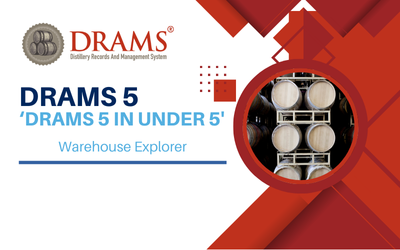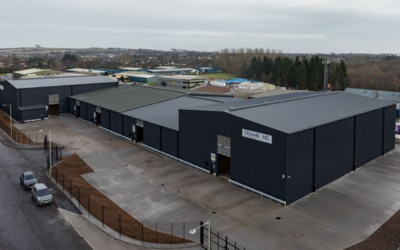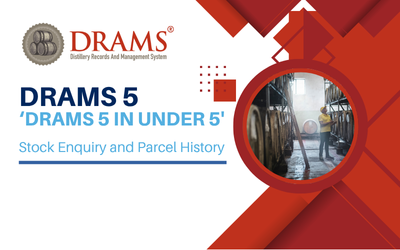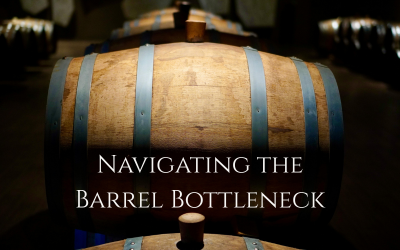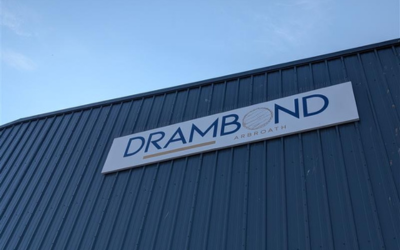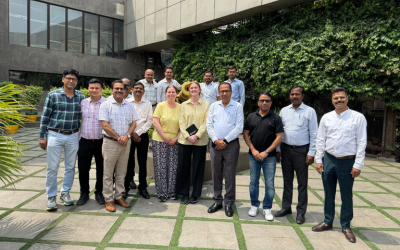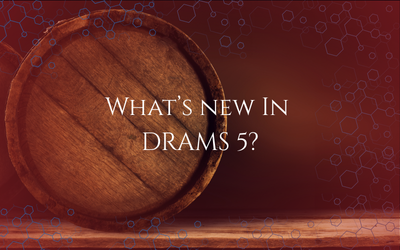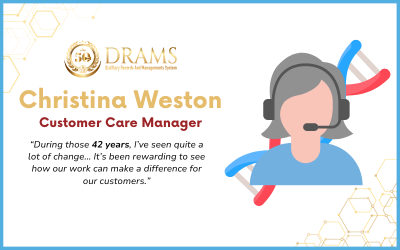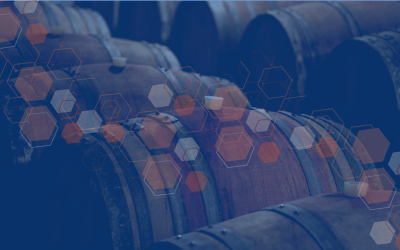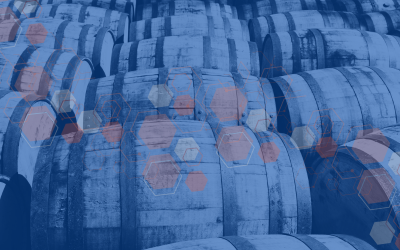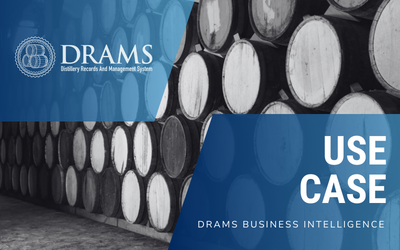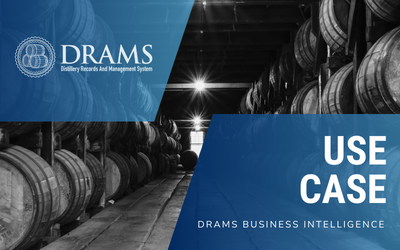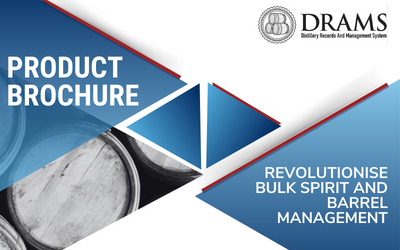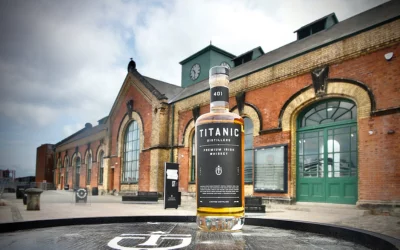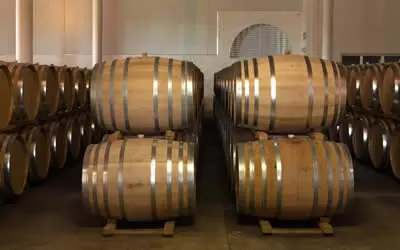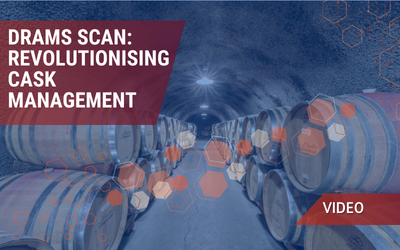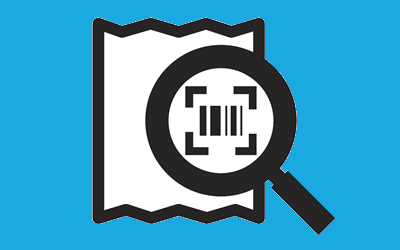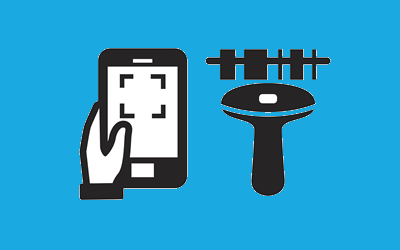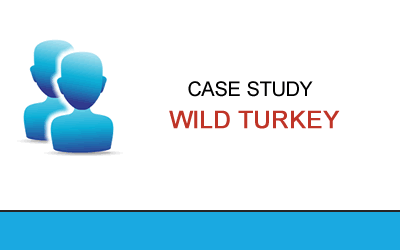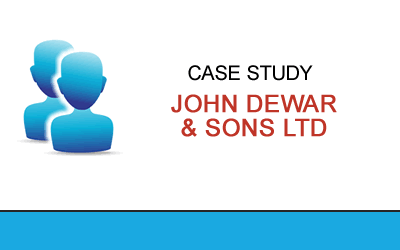(This article by DRAMS’ Director Brendan Flood first appeared as a LinkedIn post)
Scanning the horizon: Is RFID the future for distillery barrel management?
Have barcodes officially had their day? Long established as the default solution for barrel tracking in Scotch whisky production, barcodes appear to be under threat from a hi-tech competitor; the much-hyped RFID, which doesn’t require a scanner to directly point at a tag, and is even rumoured to offer the ability to read multiple tags at a time.
So is it now time to embrace RFID as the newer, superior solution? There seems to be a great deal of uncertainty on this matter, and increasingly I find myself being asked for an opinion as to which technology is ‘best’.
As a supplier of mobile scanning software (DRAMScan) that works equally well with both barcodes and RFID, I have some experience – and hopefully an impartial perspective – from which to assess the merits of each.
In this article I will compare these technologies by looking at how each one performs in the various scanning scenarios typically encountered during spirit production and maturation.
A Note on Barcodes
Much of this article focuses on the suitability of RFID for scanning in particular scenarios, but before we begin let’s do a quick barcoding recap.
Barcodes have been widely used for barrel tracking in Scotch whisky production for many years. Indeed, there is even a standard labelling format published by the Scotch Whisky Association, which has long been used by the majority of producers.
Barcode scanning has already proven its ability to deliver operational efficiency and improve accuracy of stock data, which means new adopters have the benefit of a well-worn and clearly defined path to follow. Barcoding is a safe, reliable and rewarding investment. But has it now been superseded? Let’s find out.
RFID and the Operating Environment
Deploying an RFID system can be a challenging process due to the unpredictable nature of RFID in different operating environments. Radio-frequency (RF) waves can be adversely affected by high levels of metal and/or liquid in the local environment: metal reflects the waves causing interference that can prevent the tag from receiving power and transmitting information, while liquid absorbs the waves, with similar results.
Therefore, a prevalence of metal and/or liquid in the environment simply isn’t conducive to the use of RFID – and if you’ve ever stepped inside a spirit storage warehouse filled with barrels (especially one with a metal racking system), you will understand why that presents a problem.
Neither problem is insurmountable since it is now possible to obtain RFID tags that have been designed to mitigate these issues. However, at the time of writing, all such tags are low frequency and therefore have a read range of just a couple of metres. Consider also the fact that RFID is already a comparatively more expensive solution than barcoding; adding a more specialised RFID tag will only increase the overall cost.
In summary: RFID is probably a less reliable solution than barcoding in a maturation warehouse environment. However, it is worth noting that the warehouse is only one environment in which scanning takes place; issues with liquid and metal may be less significant in other locations.
The Multipath Issue
While a laser barcode scanner is designed to read the barcode at which it is pointed, an RFID reader sends out RF waves in multiple directions, potentially reading multiple nearby tags. This is called Multipath, and it poses a significant problem for most barrel scanning activities, where you want to read one – and only one – label at a time.
With hand-held scanners the issue can be at least partially addressed by limiting the read range on the device. The potential for reading the wrong tag is significantly reduced if you need to be within touching distance of a tag to read it. Of course, if you’re scanning in a confined space, that limited read range may be an unwelcome restriction.
At fixed point scanning locations, where the readers are mounted on a stand or attached to the production line, ‘RF shielding’ can be used to limit the impact of multipath. By creating an enclosure using RF shielding material, and positioning the reader antennas within the enclosure, you can be sure that tags outside that area are not picked up in error. However, this again adds to the cost of RFID implementation, and may not be practical in all operating environments.
Use Cases
We have established that the environment can negatively impact the effectiveness of RFID, that Multipath is an obstacle to overcome, and that the cost of RFID implementation is higher than the barcode equivalent.
However, let’s set aside these factors for now and simply focus on the use cases specific to spirit barrel management. Can we establish which technology is most suitable in each instance?
Barrel Filling
While few spirit producers currently scan barrels during the filling process, an increasing interest in ‘wood tracking’ means that this is likely to change. This is where a detailed history is stored against each barrel, charting a lifetime of fillings, disgorging, quality and volume of outturn, visits to the cooperage and so on.
To implement this type of functionality, fixed point scanning can be used at the filling area to record the ID of each barrel being filled, linking the barrel to its contents. This can be achieved using either barcode or RFID, and it is difficult to definitively say which is better. However, RFID’s Multipath is a potential issue here, so if you want to avoid the costs and disruption associated with construction of a shielded enclosure, then barcodes may be the more reliable option.
Although I have seen RF shielding used successfully at fixed point barrel scanning stations, my experience (admittedly limited) of that solution is that it can be problematic. It can be extremely difficult to achieve a 100% success rate, where every passing tag is read, and every other tag in the vicinity is ignored. That isn’t to say that it’s impossible, but be prepared to invest considerable time and effort into finding a configuration that works.
Put-Away/Tier Confirm
One of the primary uses of barrel scanning is to record the precise position of each barrel within a warehouse. This is typically achieved using a hand-held scanner; the operator will scan or enter the location details, then scan multiple barrels into that location. The order in which the barrels are scanned dictates the position recorded against the barrel in the stock system.
For this type of operation it is of course essential that the reader picks up the correct barrels in the correct order. RFID’s Multipath again presents a risk of reading the wrong tag, though this can be mitigated by reducing the range on the reader to a few centimetres. However, given that hard-to-reach barcodes can be accurately read from a distance with a laser scanner, barcodes appear to be the better solution in this use case.
Stock Check
There is a relatively common misconception that use of RFID will almost entirely eliminate the workload associated with stock checks, which can now be undertaken simply by walking down a warehouse’s centre aisle with a reader picking up every tag in the warehouse. Sadly this is not the case!
There are two reasons for this: firstly, even with specialised RFID tags, read range is unlikely to stretch beyond a couple of metres with direct line of sight between tag and reader. Now what happens when you place a wall of whisky filled barrels between reader and tags? The likelihood of a successful read is virtually zero.
Secondly, this process would provide no physical asset verification. Say you conducted the process outlined above and identified 10,000 tags in the warehouse; what is that actually telling you? You still can’t say with any certainty that you actually have 10,000 barrels. Would your local Customs authority (HMRC, TTB etc.) be satisfied with that approach?
For these reasons, the stock check process in a racked warehouse must still involve scanning individual barrels with a hand-held scanner. In other industries this type of stock check may only be concerned with the presence of an asset within the warehouse, but for most spirit producers I have worked with this is also taken as an opportunity (though not necessarily a welcome one!) to validate the positional data held in the stock system for each barrel.
Therefore, in reality, the physical process for stock checking in a racked warehouse is identical to the ‘Put Away/Tier Confirm’ process described earlier, and I would suggest that barcodes are also the better solution here. A full stock check in a palletized warehouse remains an impossibility, whichever solution is implemented.
Barrel Withdrawal
When barrels are selected for withdrawal from a warehouse, the warehouse team may be given a printed picking list identifying the barrels and their locations. In this scenario there may be no scanning requirement during the withdrawal process.
However, in some instances scanning may also have a role to play here. For example, the online picking function in our DRAMScan system can direct operators to the barrels without a printed picking list. The operator may scan all of the barrels (or pallets) in the target bays/levels, using audio feedback to separate barrels that are on the list from those which are not.
Again, in this scenario the operator needs to be entirely confident that the label on the barrel (or pallet) is the one being read by the handheld scanner, so barcodes are a clear winner here.
Loading & Unloading
Barrels may be scanned out of the filling area, scanned onto trailers for transporting to the warehouse, then scanned again when unloading the trailer at the destination warehouse. Barrels coming back for dumping may also be scanned onto a trailer at the warehouse, and then again when unloading at the dump area.
Loading and unloading at the warehouse is likely to involve the use of a handheld scanner, and the same process at fill and dump areas may use handheld or fixed point scanning. In each case it is important that the correct labels are scanned each time.
If the barrels are being moved individually then the labels should be easily accessible, and there is no obvious reason why RFID would be a better option than barcodes in this scenario.
However, if the barrels are being moved on pallets, and if the pallets are stacked one on top of the other as they pass through a scanning station (e.g. a forklift carrying two pallets), then line of sight between reader and label may be impaired. Would RFID offer an advantage over barcodes in this scenario?
Perhaps. After all, one of the key benefits of RFID is that line of sight is not required. But the hidden labels in this scenario are likely to be low-frequency and short-range, and will be sandwiched between two barrels of spirit. How likely is it that fixed point scanners will reliably read all of the barrel tags on a passing forklift or trailer? I’m aware of at least one trial that has been carried out using exactly this scenario, where the results (i.e. the read success rate) were less than impressive.
Disgorging / Dumping
Barrels are typically scanned as a failsafe immediately prior to dumping; that scanning can be carried out using either fixed or mobile scanners at the dump area. Either way, it is critical that the correct tag is read to prevent any possibility of an invalid cask being disgorged: the cost of emptying the wrong barrel during a blending/vatting operation can be considerable, as the entire vat contents can be compromised.
In addition, if analysis of maturation loss is important to you, and if you’re metering liquid out of individual casks, it is also important to be able to link a cask to its outturn data.
So does this operation lend itself more to barcodes or to RFID tags? Given that you need to read the tag/label on a specific barrel at a specific stage in the process, and that you want to be sure that you read the label you’re pointing at rather than a different label in close proximity, it’s again hard to see any reason to select RFID over barcodes.
Conclusion
There is currently very little evidence of any tangible benefit to using RFID over barcoding for barrel tracking in a spirit production/storage environment. Barcoding can support the same processes, but is a cheaper and more reliable solution.
The main issues specific to RFID relate to performance in environments high in liquid and metal, and reliability of scanning the desired label. The potential benefits of RFID – such as the ability to scan multiple barrels without direct line of sight – are limited to very specific use cases, and are largely unproved in this specific operating environment.
If you have plenty of time to conduct research and undertake trials – and if budget is not a concern – then RFID may be worth considering. However, I would only recommend this approach if you have identified specific use cases that can only be addressed using RFID (and not with barcoding). If not, barcoding appears the more sensible option, since it is a widely used and proven solution.
If you do have a specific use case that requires RFID, I recommend that you consider a combined approach, where barcodes are printed on the surface of the RFID tag. This approach would offer the flexibility of using RFID for specific operations, and barcodes elsewhere.
Summary of major conclusions
- RFID is not well suited to an environment with a prevalence of liquid and/or metal
- RFID tags – especially the low frequency tags recommended for use around liquid and metal – have a short read range
- RFID can’t be used to read multiple tags over a large area within a maturation warehouse and will not eliminate the need for physical asset verification
- RFID is not particularly suitable for recording barrel positions or validating barrel movements due to the danger of reading neighbouring tags
- RFID is more expensive than barcoding, and the cost increases if specialised tags are used to mitigate environmental problems, or if shielded enclosures have to be constructed at fixed point scanning areas
- For the specific use cases identified in this article (recording and validating individual barrel locations and movements within a spirit production and storage environment) barcoding appears to do everything that RFID does, only more reliably and at a lower cost
Further Reading
You can find out more about scanning solutions for barrel tracking in spirit production and storage at www.drams-software.com/dramscan







